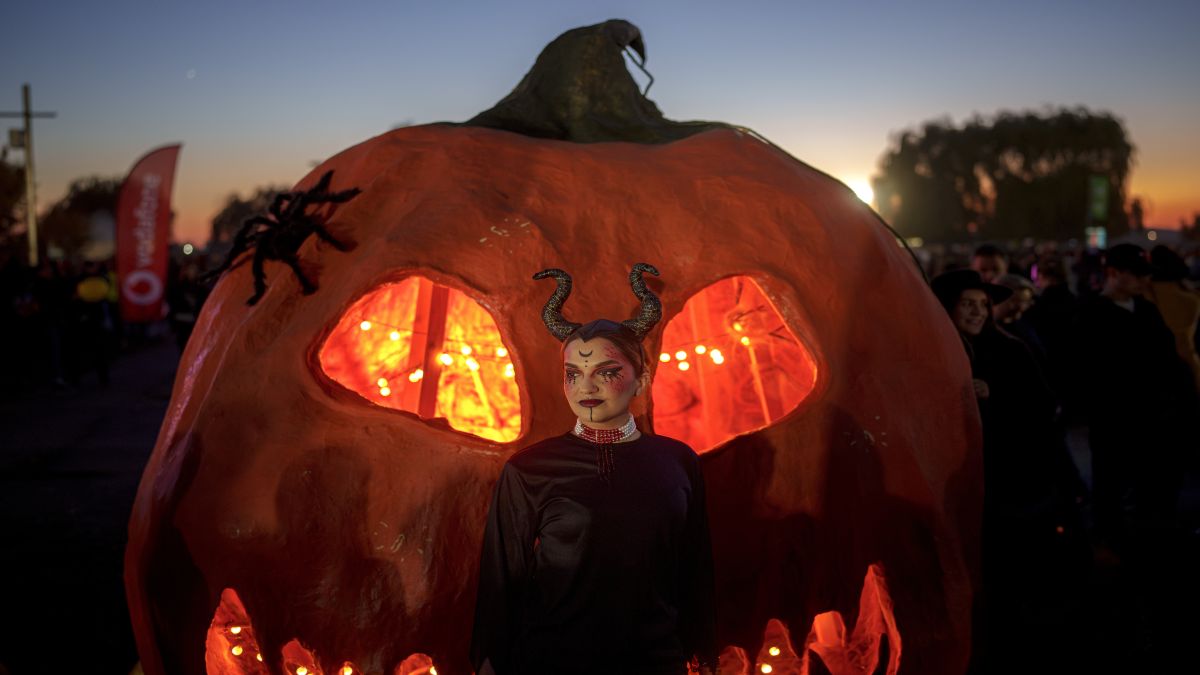Across several Western countries today (October 31), like the US, Canada, Australia and others, children and teens will dress up and go from home to home, indulging in the practice of trick or treating to celebrate the festival of Halloween.
Over the years, this festival has gained popularity not only in the West but also in several Asian countries, including India. In India, many young adults in urban cities like Delhi, Mumbai, Bengaluru mark this occasion with Halloween-themed parties.
But did you know that India has its own Halloween-esque festivals? We take a closer look at what exactly is Halloween and India’s connection to it.
Halloween history
Halloween recognised with spooky themes and festive costumes is celebrated annually on October 31.
Its origins can be traced back to the ancient Celtic festival known as Samhain, which was held on November 1 in contemporary calendars. It was believed that on that day, the souls of the dead returned to their homes, so people dressed in costumes and lit bonfires to ward off spirits.
The Celtics from Central Europe also had similar ideas, believing that the borders between the dead and the living blur on that day and end with a feast known as ‘Soin’.
Though the holiday began in Celtic regions of Ireland, the United Kingdom, and France, it quickly spread to other parts of the world. Other traditions such as trick-or-treating and carving pumpkins also became a part of Halloween and that’s how the festival is marked today across countries.
Today, people dress up in costumes as ghosts, witches, and other characters, and children go door-to-door asking for candy from neighbours. People also carve pumpkins into jack-o’-lanterns. That’s because the Celtics originally used potatoes or turnips to make makeshift lamps in their homes on Halloween to invite good spirits.
In fact, all of these traditions have become a staple of modern-day Halloween festivities.
Popularity of Halloween in India
In recent times, Halloween has gained popularity in India. Study after study, survey after survey shows that interest in Halloween has increased in the country. One study revealed that since 2015, the number of online searches for Halloween in October has risen by nearly 200 per cent.
Many note that the popularity of the festival in India is owing to globalisation and the world becoming one big ‘global village’. The increasing influence of Western culture, primarily through movies, and social media has made Halloween a must for every young adult in urban areas of India. Through videos of costumes, themed parties, and decorations, Indian audiences have been drawn to Halloween’s playful and expressive spirit.
Moreover, the commercial aspect of Halloween can’t be overlooked. In fact, marketing around the holiday has made it so well-known in parts of the country. Think about stores and establishments offering costumes, candy, decorations and discounts all veered towards Halloween.
However, some sociologists note that the primary reason why Halloween hasn’t become a widespread phenomenon in India is owing to the country’s general belief in the afterlife.
Halloween-like festivals in India
While the popularity of Halloween is increasing in India, the country already has its ways and days to remember its dead. In most cases, unlike the West, these are marked by observing fasts and offering special prayers.
One of India’s most popular Halloween-like festivals in India is West Bengal’s Bhoot Chaturdashi. Also known as West Bengal’s Halloween, it is observed one day before Diwali — this year, it fell on October 30.
The name “Bhoot Chaturdashi” comes from two words — bhoot and Chaturdashi. While the former means ghost or spirit, the latter is the 14th day in the lunar calendar. The festival is said to have originated as a way to honour ancestors from 14 previous generations, as people believed that these spirits return to bless and protect their descendants on this night.
It is believed that the veil between this and the world of the afterlife thins on this day and ancestors descend upon the world to bless their families. To show the 14 forefathers around the house, 14 diyas are placed around the house so that they don’t get lost.
On Bhoot Chaturdashi, there’s also the ritual of eating 14 different types of leafy greens, known as “choudosho shaak”. This custom is believed t to cleanse the body of impurities.
While West Bengal has Bhoot Chaturdashi, Odisha has the Bada Badua Daka ritual, which is carried out on the day of Diwali. To mark this, people place a rangoli sailboat design on the ground, along with some offerings. Then holding a bundle of jute stems in their hands, they chant: “Bada badua ho, andhaara re aasa, alua re jaa. Baaisi pahaacha re gada gadau tha (O forefathers, come to us in this dark evening, we light your way to heaven. May you attain salvation on the 22 steps of Jagannath Dham).”
There’s also Pitru Paksha, the 16-day festival when ancestors are remembered. During this period, Hindus perform rituals to make departed ancestors happy by offering food and water. It is a festival to make sure that a family is taking care of their ancestors even after their soul has departed to heaven.
Muslims in India also mark Shab e-Barat. It is observed on the 14th night of Sha’aban and it is believed that the lord writes people’s destinies based on their deeds. On this day, people also visit the graves of their loved ones and pray for them.
With inputs from agencies


)

)
)
)
)
)
)
)
)



